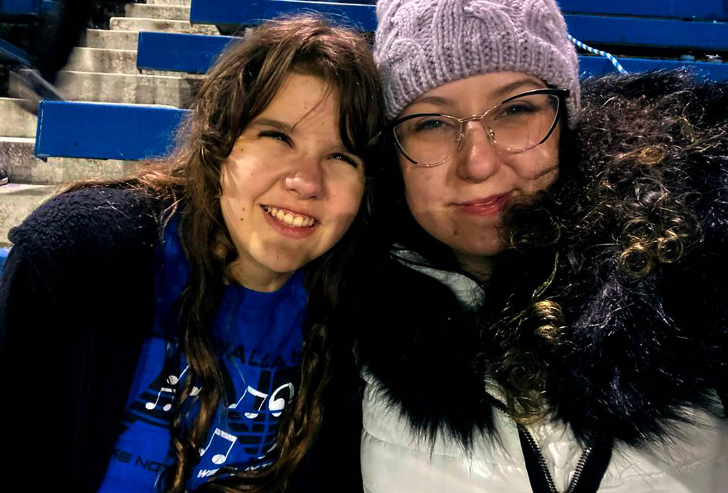Girl Born With LCA Sees Snowflakes For the First Time
Aiden Moore-Van De Rostyne and Her Mother Eliza Van De Rostyne
April 18, 2023
Aiden Moore-Van De Rostyne is a 16-year-old girl in Walla Walla, WA who has LCA. She had almost completely lost her vision. Throughout her childhood, Aiden could differentiate light and dark but to see shapes or letters on paper her nose would have to be right on the paper. She was able to see snowflakes for the first time with the help of an experimental gene therapy she was selected for. About a year ago Oregon Health and Science University reached out and had Aiden receive experimental gene therapy in one eye.
What is LCA?
Leber’s Congenital Amaurosis (LCA) affects the retinas and is a rare condition, it affects 2 out of 100,000 children born. Only 50,000 people in the U.S. have LCA. When a baby is diagnosed with LCA they have low vision, and usually the babies are born blind. The low vision in children with LCA will disappear around 6 months after birth. It is a genetic mutation causing the retinas to not produce enough electrical energy to see. The less energy there the less the baby can see. Symptoms to watch for include the child rubbing their eyes, this sign shows that the child’s vision is not right, along with that other symptoms are possible eye shaking and photophobia (light sensitivity).
How It Works
according to this website, out of everyone in the U.S. She was among the 15 chosen for this therapy. Gene therapy is essentially delivering a copy that is good to the faulty retina. This process should “jumpstart” the retina to work normally. The therapy also consists of using small molecular machinery to the retina in the back of the eye.
It is wonderful that treatment has worked so well for Aiden and any others that have gotten this treatment. It is amazing to have the power to help people with LCA and help potentially restore the vision they lost
